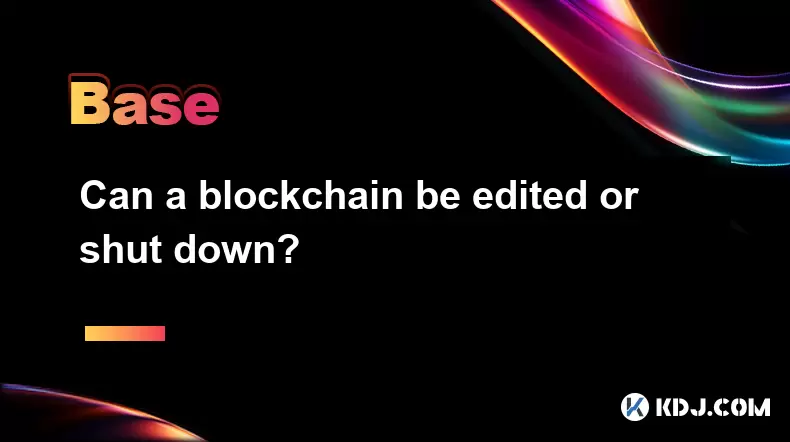-
 Bitcoin
Bitcoin $117400
0.05% -
 Ethereum
Ethereum $3767
0.13% -
 XRP
XRP $3.554
2.85% -
 Tether USDt
Tether USDt $1.000
0.01% -
 BNB
BNB $766.5
1.11% -
 Solana
Solana $196.6
8.51% -
 USDC
USDC $0.0000
0.01% -
 Dogecoin
Dogecoin $0.2716
-0.23% -
 Cardano
Cardano $0.8901
3.81% -
 TRON
TRON $0.3144
0.09% -
 Hyperliquid
Hyperliquid $44.52
-3.11% -
 Stellar
Stellar $0.4735
2.59% -
 Sui
Sui $3.978
2.18% -
 Chainlink
Chainlink $19.59
1.45% -
 Hedera
Hedera $0.2715
0.05% -
 Avalanche
Avalanche $25.48
1.87% -
 Bitcoin Cash
Bitcoin Cash $523.6
-4.49% -
 Shiba Inu
Shiba Inu $0.00001551
0.09% -
 Litecoin
Litecoin $115.9
-0.92% -
 UNUS SED LEO
UNUS SED LEO $8.992
0.06% -
 Toncoin
Toncoin $3.336
2.13% -
 Polkadot
Polkadot $4.510
0.70% -
 Uniswap
Uniswap $10.91
2.37% -
 Ethena USDe
Ethena USDe $1.001
0.02% -
 Pepe
Pepe $0.00001421
1.31% -
 Monero
Monero $320.2
-1.73% -
 Bitget Token
Bitget Token $4.950
0.14% -
 Dai
Dai $0.0000
-0.02% -
 Aave
Aave $323.3
0.00% -
 Bittensor
Bittensor $447.5
8.38%
Can a blockchain be edited or shut down?
Blockchain's immutability ensures data integrity through cryptographic hashing and decentralized consensus, making unauthorized alterations nearly impossible.
Jul 21, 2025 at 10:49 pm

Understanding the Immutable Nature of Blockchain
Blockchain technology is often described as immutable, which means once data is recorded on the blockchain, it cannot be altered or deleted. This immutability is a core feature of most blockchain systems and is achieved through cryptographic hashing and distributed consensus mechanisms. Each block in the chain contains a reference to the previous block via a hash, making any attempt to modify a prior block immediately detectable by the network.
In a public blockchain, such as Bitcoin or Ethereum, this immutability is enforced by a decentralized network of nodes. Each node stores a copy of the entire blockchain and validates new transactions independently. Any attempt to edit a block would require changing all subsequent blocks and gaining control over the majority of the network, which is computationally infeasible for large networks.
Private and Permissioned Blockchains: Flexibility vs. Security
Unlike public blockchains, private and permissioned blockchains may allow for more flexibility in editing or modifying data. In such systems, access is restricted to a limited number of participants, often controlled by an organization or consortium. These blockchains may implement features like centralized governance, rollback capabilities, or data editing protocols under specific conditions.
However, this flexibility comes at the cost of decentralization and security. Because control is concentrated, the risk of tampering or censorship increases. These systems are typically used in enterprise settings where data integrity must be balanced with operational needs, such as compliance with legal regulations or internal auditing requirements.
Hard Forks: A Mechanism for Blockchain Modification
One of the few legitimate ways to alter a blockchain is through a hard fork. A hard fork refers to a radical change in the protocol that makes previously invalid blocks or transactions valid, or vice versa. This requires the majority consensus of network participants to adopt the new rules.
Hard forks are not edits in the traditional sense. They result in a permanent divergence from the previous version of the blockchain. If nodes do not upgrade to the new protocol, two separate blockchains can coexist. Examples include the Ethereum hard fork following the DAO incident, which led to the creation of Ethereum (ETH) and Ethereum Classic (ETC).
Implementing a hard fork involves:
- Proposing the change to the community
- Gaining support from miners, developers, and users
- Deploying the updated software at a predetermined block height
Shutting Down a Blockchain: Theoretical Possibilities
Shutting down a blockchain is a complex endeavor. In the case of public blockchains, it would require a global consensus among all participants to stop validating and abandon the network. This is highly unlikely due to the decentralized and incentivized nature of such systems.
For private or consortium blockchains, shutting down the network may be more feasible. It can be achieved by:
- Ceasing operations of the validating nodes
- Discontinuing the maintenance of the underlying infrastructure
- Revoking access permissions for all participants
However, even in these cases, data stored on the blockchain may persist in backups or mirrored copies, making complete eradication difficult.
Legal and Regulatory Considerations
There are also legal challenges associated with editing or shutting down a blockchain. In jurisdictions where blockchain is recognized as a legal record-keeping mechanism, altering or deleting data may violate laws related to data retention, transparency, or digital signatures.
Moreover, in the case of smart contracts, self-executing agreements stored on the blockchain, any attempt to modify or shut down the chain could lead to legal disputes, financial losses, or breaches of contract. Courts may be required to interpret the validity of such actions, further complicating the matter.
Security Implications of Blockchain Editing
Allowing blockchain editing introduces significant security risks. Once the principle of immutability is compromised, attackers may exploit this to rewrite transaction history, double-spend assets, or manipulate smart contracts. This undermines the trustless nature of blockchain systems and can lead to loss of funds or system failure.
Even in permissioned systems, robust access control mechanisms and audit trails must be in place to prevent unauthorized modifications. Multi-signature approvals, time-locked changes, and on-chain governance are some of the methods used to mitigate these risks.
Frequently Asked Questions
Can a blockchain be hacked to change transaction data?
While theoretically possible, altering transaction data on a well-established public blockchain is extremely difficult due to its decentralized and cryptographic nature. An attacker would need to control more than 50% of the network's computing power, which is prohibitively expensive and impractical for major networks like Bitcoin or Ethereum.
Is it possible to delete data from a blockchain?
In public blockchains, data deletion is not possible without a hard fork or sidechain solution. Private blockchains may allow data deletion under specific governance rules, but this compromises the system's immutability and security.
What happens if a blockchain network loses all its nodes?
If all nodes in a blockchain network go offline, the network effectively becomes inactive. However, as long as there is a backup of the blockchain data, the network can be restarted once nodes come back online. Public blockchains are less likely to experience this due to their global and decentralized node distribution.
Are there any tools or protocols that allow blockchain editing?
Some blockchain platforms, especially private and enterprise-grade ones like Hyperledger Fabric or R3 Corda, offer features for data correction or amendment under strict governance. These are not available in public blockchains and require permissioned access.
Disclaimer:info@kdj.com
The information provided is not trading advice. kdj.com does not assume any responsibility for any investments made based on the information provided in this article. Cryptocurrencies are highly volatile and it is highly recommended that you invest with caution after thorough research!
If you believe that the content used on this website infringes your copyright, please contact us immediately (info@kdj.com) and we will delete it promptly.
- Bitcoin, Trump Media, and Acquisition: A New York Perspective
- 2025-07-22 06:30:12
- Venture Capital, Crypto Treasuries, and Ethena (ENA): A New York Perspective
- 2025-07-22 06:50:13
- Solana: Building a Decentralized Nasdaq with Block Assembly Marketplace?
- 2025-07-22 06:30:12
- Jito, BAM, and Solana MEV: A New Era for Blockspace?
- 2025-07-22 06:50:13
- Raydium, Crypto Payroll, and Transformation: A New Era for Fintech
- 2025-07-22 07:30:12
- Arctic Pablo Coin Presale: The Meme Coin Opportunity of 2025?
- 2025-07-22 07:35:12
Related knowledge

What is the difference between CeFi and DeFi?
Jul 22,2025 at 12:28am
Understanding CeFi and DeFiIn the world of cryptocurrency, CeFi (Centralized Finance) and DeFi (Decentralized Finance) represent two distinct financia...

What is the difference between a sidechain and a Layer 2?
Jul 20,2025 at 11:35pm
Understanding the Concept of SidechainsA sidechain is a separate blockchain that runs parallel to the main blockchain, typically the mainnet of a cryp...

What is the Inter-Blockchain Communication Protocol (IBC)?
Jul 19,2025 at 10:43am
Understanding the Inter-Blockchain Communication Protocol (IBC)The Inter-Blockchain Communication Protocol (IBC) is a cross-chain communication protoc...

How does sharding improve scalability?
Jul 20,2025 at 01:21am
Understanding Sharding in BlockchainSharding is a database partitioning technique that is increasingly being adopted in blockchain technology to enhan...

What is the "crypto trilemma" of scalability, security, and decentralization?
Jul 19,2025 at 06:28pm
Understanding the Concept of the Crypto TrilemmaThe crypto trilemma refers to the challenge of simultaneously achieving scalability, security, and dec...

What is a cliff and vesting schedule in tokenomics?
Jul 20,2025 at 10:28am
What Does a Cliff Mean in Tokenomics?In tokenomics, a cliff refers to a specific period during which token holders are not allowed to access or transf...

What is the difference between CeFi and DeFi?
Jul 22,2025 at 12:28am
Understanding CeFi and DeFiIn the world of cryptocurrency, CeFi (Centralized Finance) and DeFi (Decentralized Finance) represent two distinct financia...

What is the difference between a sidechain and a Layer 2?
Jul 20,2025 at 11:35pm
Understanding the Concept of SidechainsA sidechain is a separate blockchain that runs parallel to the main blockchain, typically the mainnet of a cryp...

What is the Inter-Blockchain Communication Protocol (IBC)?
Jul 19,2025 at 10:43am
Understanding the Inter-Blockchain Communication Protocol (IBC)The Inter-Blockchain Communication Protocol (IBC) is a cross-chain communication protoc...

How does sharding improve scalability?
Jul 20,2025 at 01:21am
Understanding Sharding in BlockchainSharding is a database partitioning technique that is increasingly being adopted in blockchain technology to enhan...

What is the "crypto trilemma" of scalability, security, and decentralization?
Jul 19,2025 at 06:28pm
Understanding the Concept of the Crypto TrilemmaThe crypto trilemma refers to the challenge of simultaneously achieving scalability, security, and dec...

What is a cliff and vesting schedule in tokenomics?
Jul 20,2025 at 10:28am
What Does a Cliff Mean in Tokenomics?In tokenomics, a cliff refers to a specific period during which token holders are not allowed to access or transf...
See all articles

























































































